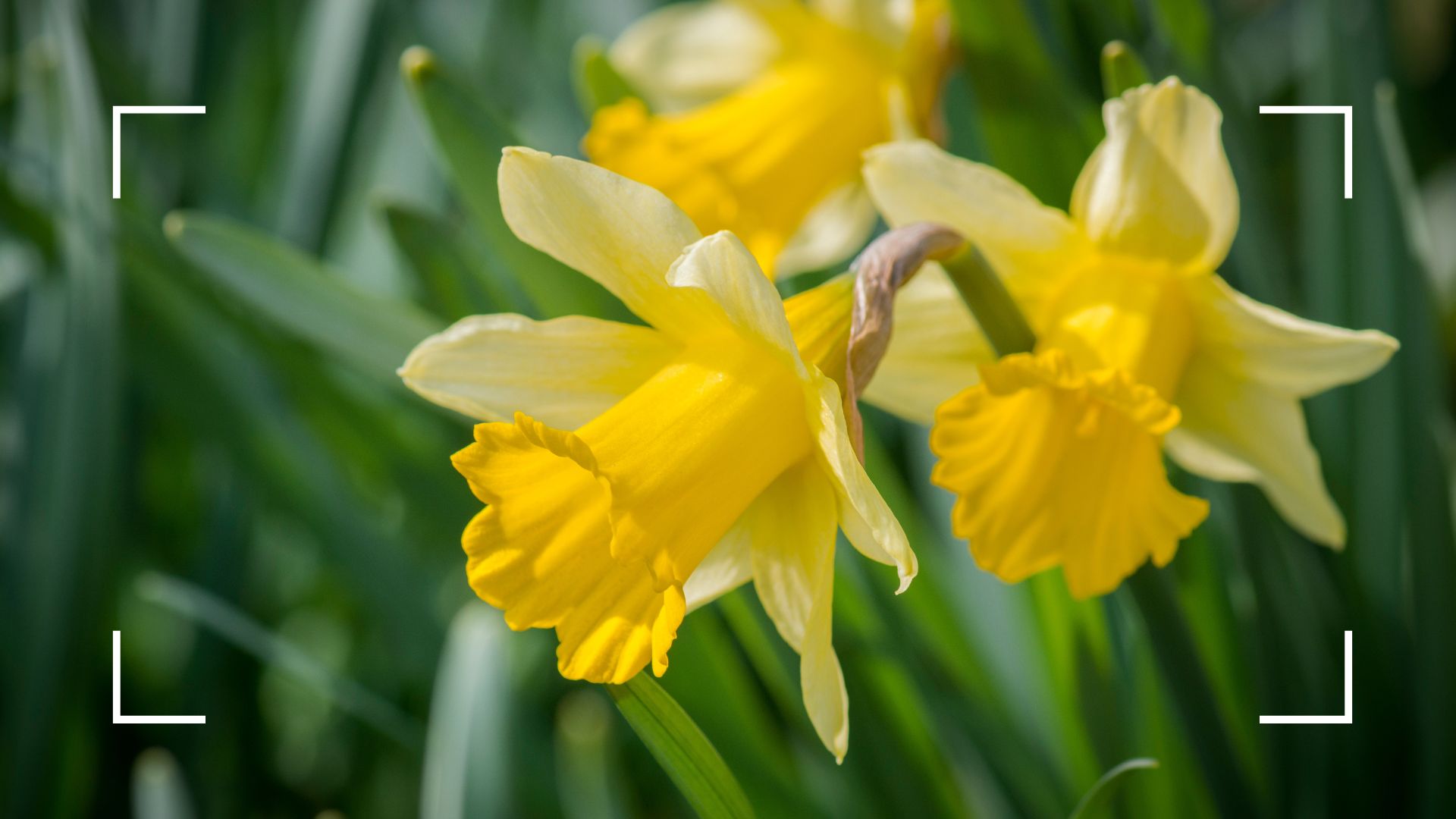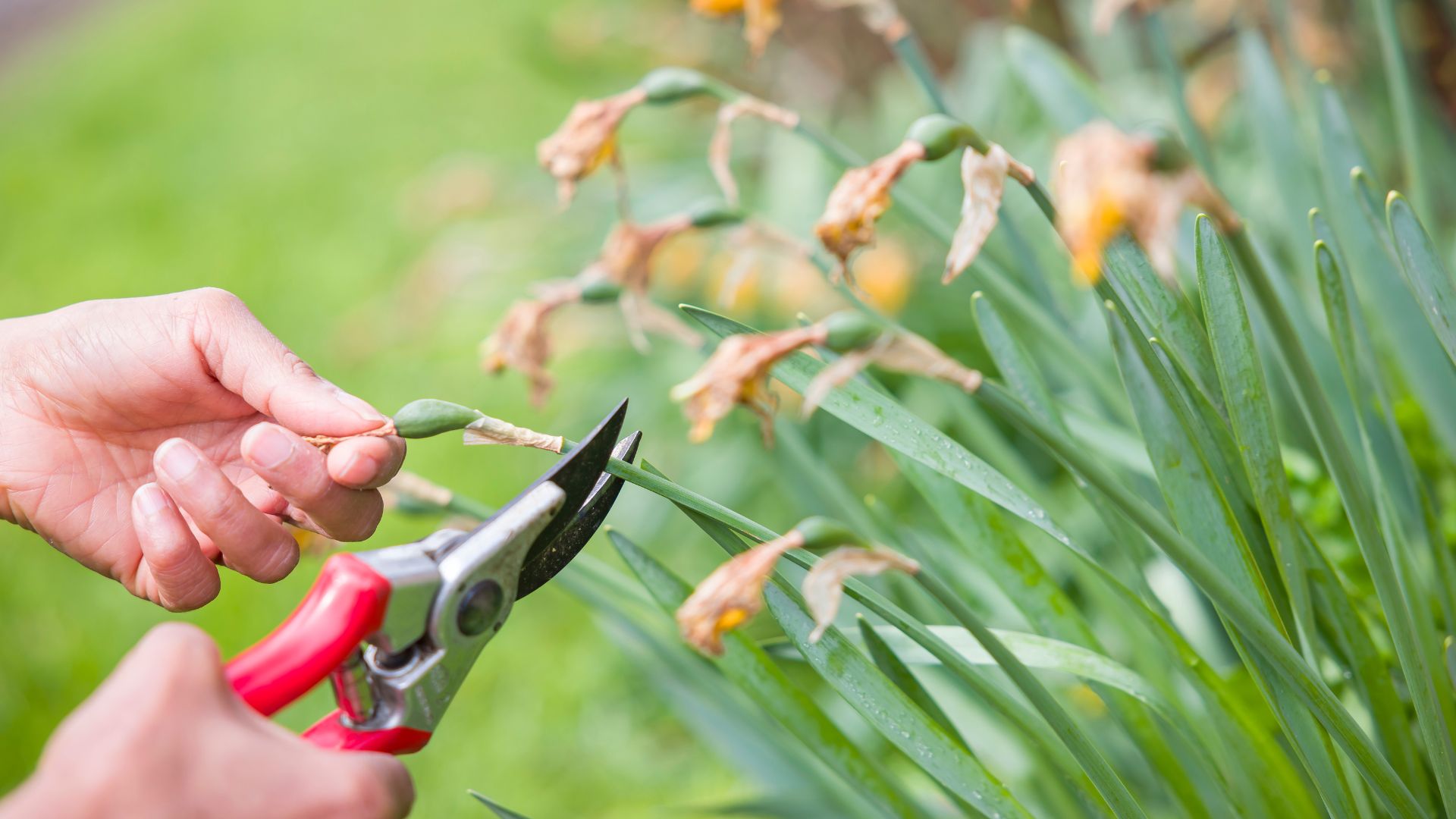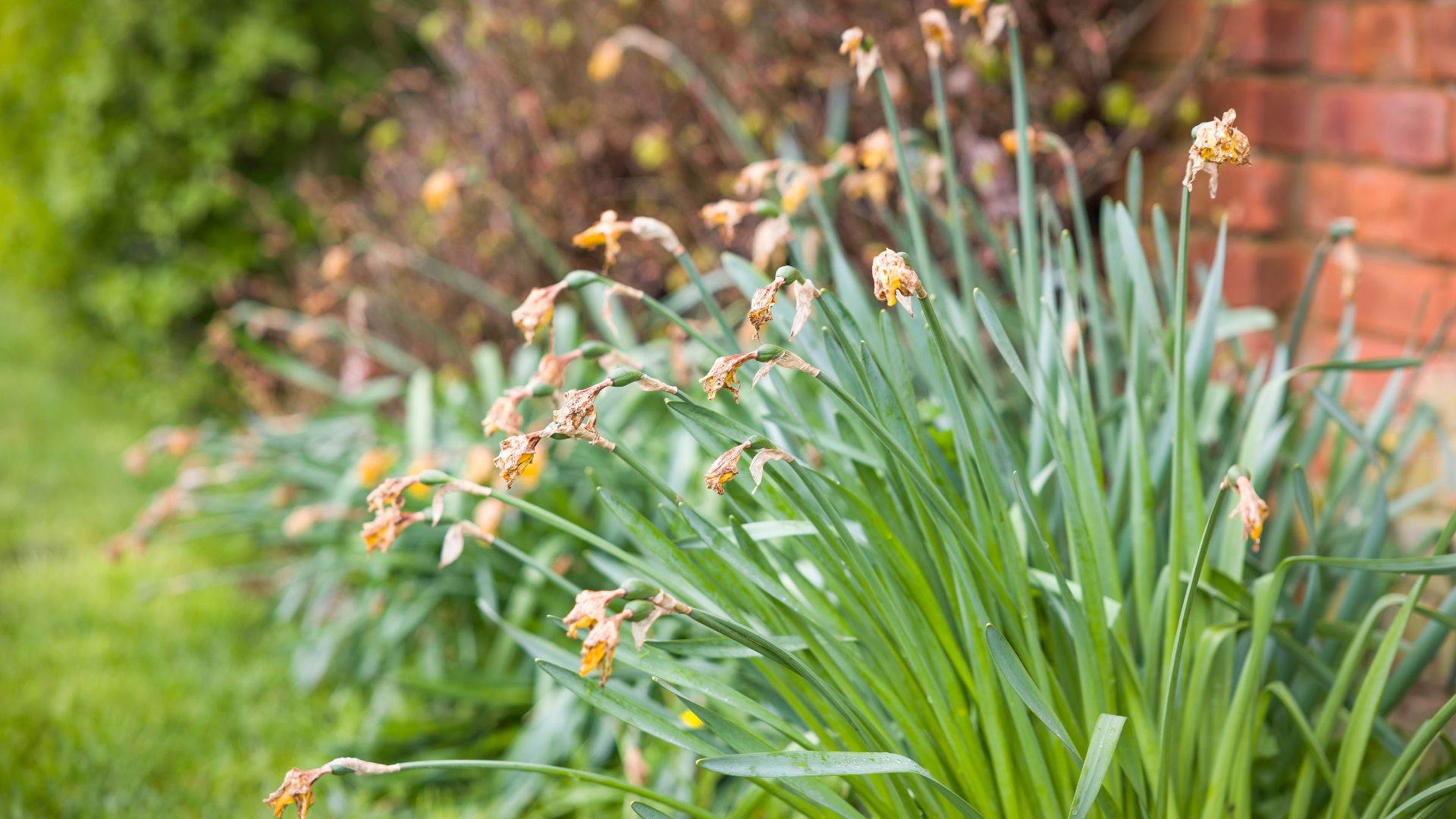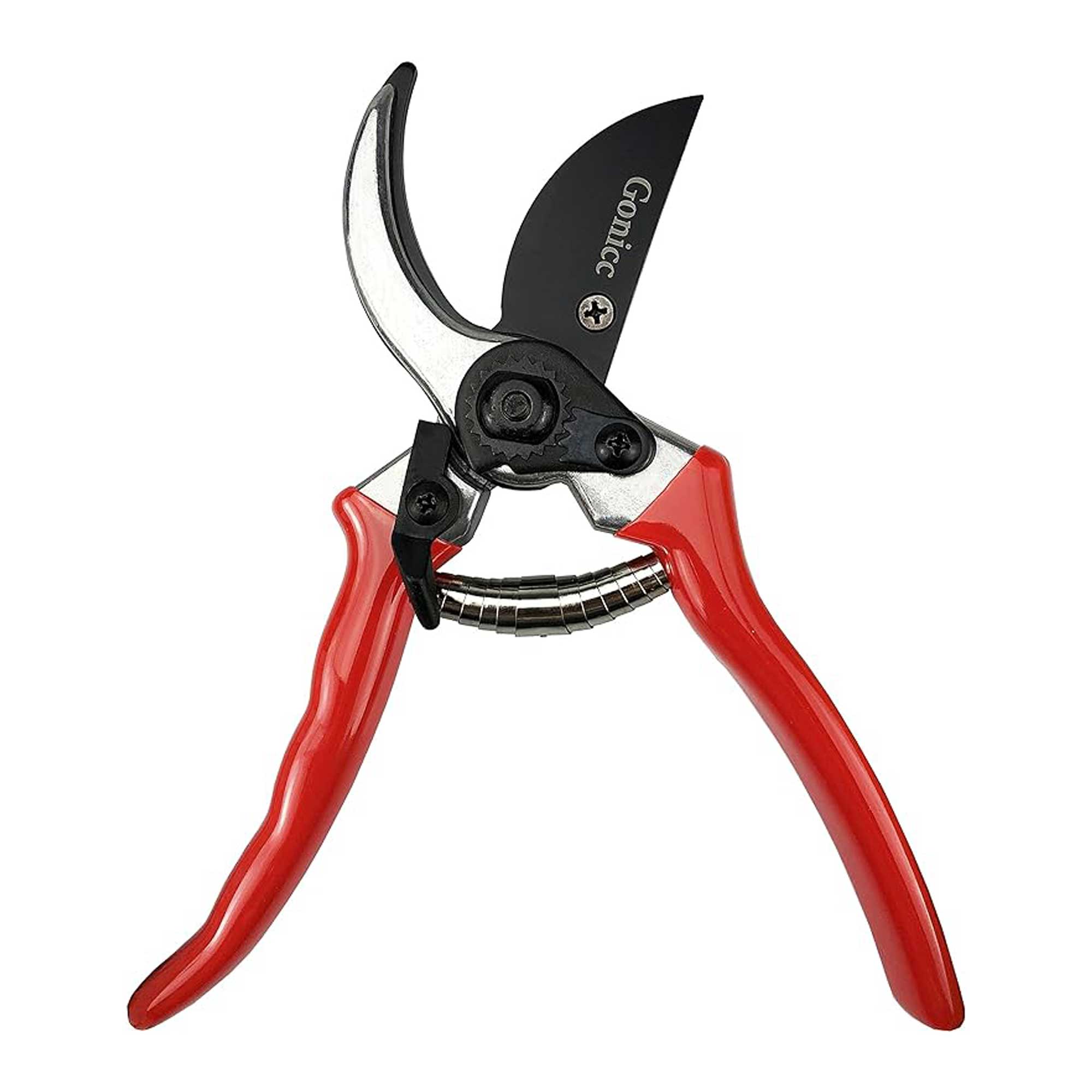Should you deadhead daffodils? Gardening experts share their advice for longer-lasting blooms
These butter-yellow flowers are one of the first signs of spring, but should you deadhead or leave them be?


Once the daffodils start popping up, there's no denying that spring has well and truly sprung. But how can you keep these pops of sunshine in your garden for longer, and is deadheading the answer?
If you successfully planted your spring bulbs at the right time, your garden will be filled with glorious patches of sunshine-bright daffodils right now. But if you don't know what to do with daffodils after flowering this enjoyment can be short-lived.
We've consulted our team of gardening experts to get clarity on whether or not you should deadhead daffodils or leave them to wilt away naturally.
Should you deadhead daffodils?
While there are various plant species you should never deadhead, daffodils do not belong on that list and will benefit from a well-timed chop.
"Deadheading is a crucial step in maintaining the health and longevity of a Daffodil," explains expert florist David Denyer from online florist company Eflorist. "The best time to deadhead is after the flowers fade and wilt. This will help the plant redirect its energy back into the bulb, encouraging growth for next spring."
He explains that deadheading can also enhance the overall look of your plant. "Keeping it looking neat and vibrant. Leaving faded blooms in place can diminish the visual appeal of the flower and your home," adds David.

As a celebrated figure in the world of floral design, David has captivated audiences with his stunning floral arrangements and designs for years. He is a two-time Florist of the Year and six-time Chelsea Gold Medalist, whilst also being the in-house flower expert for Eflorist.
This is a similar case to deadheading tulips, only deadhead once the plant is past its best and is ready to start the process of dying back. If you do it earlier, you can risk damaging the plant and its ability to come back next spring.
Sign up to our free daily email for the latest royal and entertainment news, interesting opinion, expert advice on styling and beauty trends, and no-nonsense guides to the health and wellness questions you want answered.
David warns, "You should avoid deadheading daffodils if the blooms are still fresh or only partially faded. Removing them too early can cut short their natural life cycle and prevent growth for next year."
"If you're growing daffodils in wild areas and want natural bulb development, avoid deadheading, as this can prevent the bulbs from multiplying and spreading new growth throughout the area," says David.

What are the benefits of deadheading daffodils?
Although daffodils are pretty hardy plants, you can plant daffodil bulbs quite late into the year and still have blooms in spring, deadheading is quite important to their health.
"Deadheading daffodils will prevent the plant from producing seedheads, and this ensures that the plant directs its energy back into the bulb to increase the chances of it flowering again the next year," explains Graham Smith MCIHort, horticulture expert from LBS Horticulture.
"If seedheads are left on the plant and allowed to ripen, this can weaken the plant, and it may not grow as much when it flowers again."

Graham has extensive knowledge in the horticultural and gardening industries, and prides himself on using this to help gardeners of all skills create their perfect outdoor space.
FAQs
How to deadhead daffodils
Now that the experts have revealed you should go ahead and deadhead your daffodils, you may be wondering what the best method is. It's time to get your essential gardening tools at the ready.
"You do not need to remove the whole stem of the daffodil at its base," Graham explains. Why? "Because the stem is still used by the plant as it dies back naturally."
"Pinch off the dead flower head and the top inch of the stalk. Leave the rest of the plant in place, as it will continue to photosynthesise and provide energy to the bulb as the plant dies back."

After deadheading the flowers, don't forget to add the offcuts to your homemade compost heap. Then, it's time to give the bulbs some TLC.
"After deadheading, you can provide the daffodils with fertiliser to help the bulb's energy production. You can use a tomato feed every two weeks, or apply a general plant feed after deadheading," recommends Graham.
"Leave the foliage of the daffodils to die back on its own, and this should take roughly six weeks. Only cut back the daffodils once their leaves have turned yellow, as otherwise this will reduce the number of flowers the plant will produce in the following year," he continues.
Shop deadheading essentials

RRP: £9.99 | These gardening gloves have been awarded ‘Amazon’s Choice’, and it’s easy to see why – they’re breathable, comfortable, and stylish.

RRP: £13.95 | These popular secateurs have over 8,000 5-star ratings on Amazon. They feature a carbon steel blade and lightweight, non-slip handles, making precise pruning easier.

RRP: £9.50 | Although designed for tomatoes, this tomato food can help provide your daffodil bulbs with the nutrients they need to come back strong next year.
Should you be looking to bring your daffodils inside to be displayed in a vase, you'll want to try this simple sap hack that florists recommend to prolong blooms.

Emily joined woman&home as a staff writer after finishing her MA in Magazine Journalism from City University in 2023. After writing various health and news content, she now specialises in lifestyle, covering unique cleaning hacks, gardening how-tos, and everything to help your houseplants thrive.